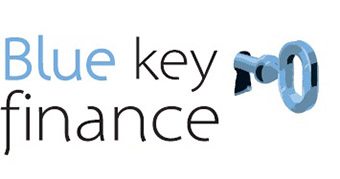What to do if your interest-only mortgage is expiring
What to do if your interest-only mortgage is expiring
Interest-only (IO) mortgages were increasing in popularity year-on-year until early 2017, but have fallen out of favour since. They mostly benefit investors looking for high-growth returns and tax deductibility on their property; however, a small portion of owner-occupiers opt for IO loans as well.
If you take out an IO loan, you have the ability to repay only the interest portion of your mortgage for a set period of time. Because you’re only paying off the interest rather than the principal as well, your repayments tend to be much lower.
What happens when the interest-only period expires?
Unfortunately, the interest-only gravy train doesn’t last forever. Once this period expires (usually after one to five years), your loan will automatically convert to principal and interest (P&I), under a standard variable rate. Once this has occurred, IO customers can be hit with a significant increase to their repayments.
For an average loan size of $4000,000, interest-only borrowers can expect to pay an extra $3650 per year once their loan coverts to ‘principle & interest’.
Those who borrowed above the $400,000 average could be hit even harder, with the increased cost for a million-dollar loan clocking in at $789 per month, or $9468 annually.
What options do you have once your IO loan converts?
If your IO loan is up for expiry, it’s important to start preparing well in advance. Set calendar reminders or check in with us in the lead up to your loan expiry date. You want to make sure you’ve given yourself enough time to consider the most appropriate option.
Below are the five main choices you have once your loan converts:
- Ask for an interest-only extension
Depending on your lender, you may be able to roll over into an extended interest-only period, but don’t bank on it. APRA recently announced it will be cracking down on interest-only lending in a bid to tighten investor borrowing. This may make it harder to be approved for an extension, but not impossible.
- Switch to principal and interest (and negotiate)
In most cases, your IO loan will automatically convert to a standard variable principal and interest loan at expiry. Although P&I interest rates are typically lower than they are for IO, it’s unlikely that you’ll automatically roll over onto the most competitive rate available. This is where negotiating with your lender is important.
The home loan market is highly competitive, and lenders may be willing to negotiate in a bid to keep your business by offering a lower rate than what is advertised. Make sure you do your homework before negotiating. By utilising our services, you should be able to reference at least two real competitive rates on offer elsewhere and be prepared to walk if they don’t meet your request.
- Refinance to get a better deal
If your lender is unwilling to match your demand, or you can’t get an interest-only extension, it might be time to refinance. One of the key benefits of refinancing is that it can help you to obtain a new 30-year loan term.
This can help with your monthly cash flow. It will stretch out your repayments over a longer period of time, which can help to reduce the amount you’ll need to pay each month. But this will also slow down the repayment of your debt, so keep this in mind before jumping ship, along with any other associated costs of refinancing.
- Get on a hardship plan
If you’re struggling to adjust to higher repayments, or know you won’t have the cash to cover them once your loan converts, contact your lender’s hardship team.
You’ll likely be reassessed on factors such as your income, assets, liabilities and number of dependents living with you.
Following this, your bank may help you to come up with a workable payment solution. This may include extending your loan period for another 12 months or freezing your interest for a period of time.
- Sell your home
While most definitely a last resort for owner-occupiers, the federal government’s encouragement of negative gearing means that rents are lower than mortgage costs in many areas. As long as your home has gained some value since the purchase date, selling your home and moving to rented accommodation is always an option.
This safety net is removed, however, if there is any risk of house prices going south – so anyone looking to get involved in an IO loan should keep a very close eye on the housing and financial markets.
Whatever option you think you will choose, please contact us first.




Leave a Reply
Want to join the discussion?Feel free to contribute!